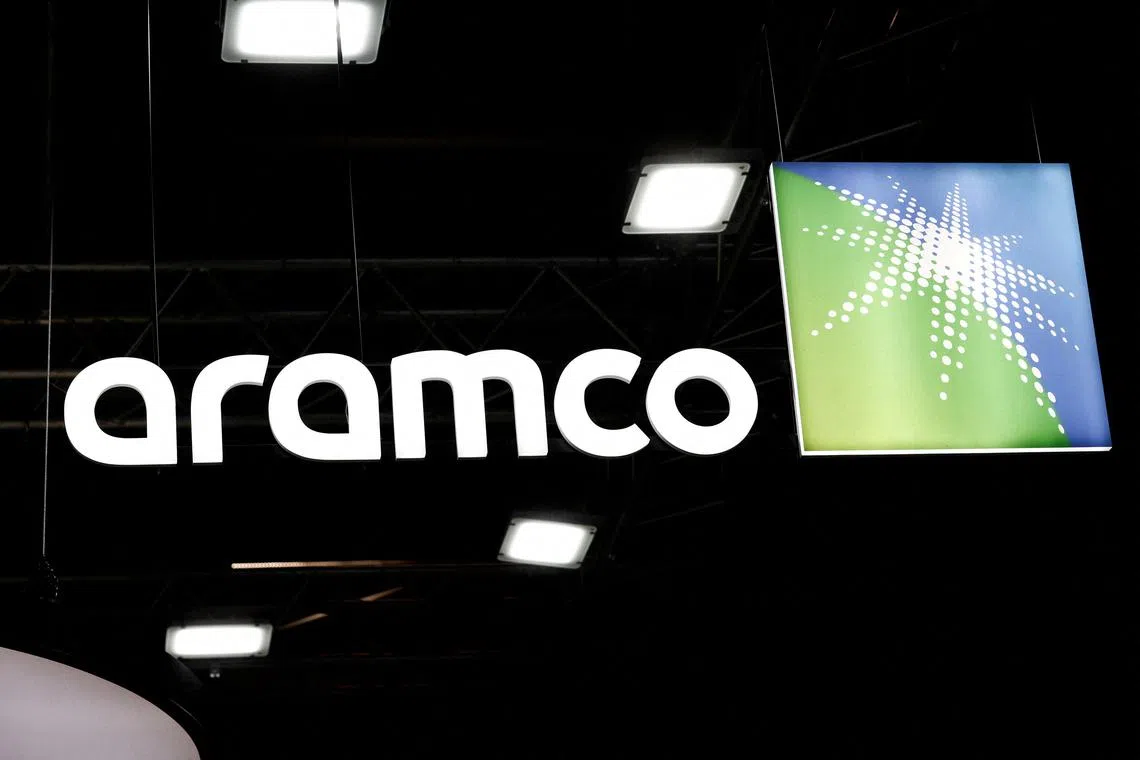Saudi Aramco boosts 2023 dividends 30% despite drop in profit
Sign up now: Get ST's newsletters delivered to your inbox

The profit was still the company’s second-highest on record, it said, following a record US$161.1 billion in 2022.
PHOTO: REUTERS
Follow topic:
DUBAI - Saudi Arabia’s state-owned oil giant Aramco boosted its dividends in 2023 despite net profit falling 24.7 per cent to US$121.3 billion (S$161.74 billion) on lower oil prices and volumes, showing the state’s continued reliance on oil revenue as it seeks to diversify.
The profit, down from US$161.1 billion in 2022
Oil revenues made up 62 per cent of total state revenues in 2023.
The Saudi government, which directly holds about 82.2 per cent of Aramco, relies heavily on the oil giant’s generous payouts, which also include royalties and taxes.
Saudi Arabia is spending billions of dollars trying to diversify and find alternative sources of wealth having relied on oil for decades.
“Our balance sheet remains strong, even after our significant growth programme and dividend payouts,” Chief Executive Amin Nasser said.
Mr Nasser expects global oil demand for 2024 at 104 million barrels a day, up from an average of 102.4 million barrels in 2023.
The state’s ambitious economic agenda, known as Vision 2030, is spearheaded by the sovereign Public Investment Fund, which owns 16 per cent of Aramco, after a fresh transfer by the government of 8 per cent to companies PIF owns last week.
Aramco declared a base dividend, paid regardless of results, of US$20.3 billion for the fourth quarter. Aramco expects to pay out US$43.1 billion in performance-linked dividends in 2024, including US$10.8 billion to be paid out in the first quarter.
The base dividend was increased 4 per cent from the previous quarter, and the performance-linked dividend was about 9 per cent higher.
The company said capital investments were at US$49.7 billion in 2023, up from US$38.8 billion in 2022. It forecast capital investments between US$48 billion and US$58 billion in 2024, growing until the middle of the decade.
That range is wide because for external investments, “there’s an element of timing that we don’t fully control”, Chief Financial Officer Ziad Al-Murshed said on a media call.
The Saudi government in late January ordered Aramco to scrap its expansion plan to boost production capacity to 13 million barrels a day (mbpd), returning to the previous 12 mbpd target.
The capacity decision “is expected to reduce capital investment by approximately US$40 billion between 2024 and 2028”, Aramco said.
Most of the savings are expected in the latter years, so how it will be spent will be decided as opportunities arise, Mr Murshed said. Priorities for using the extra cash include sustaining capex, the base dividend, growth capex, additional distributions and further deleveraging, he added.
Free cash flow fell to US$101.2 billion in 2023 from US$148.5 billion in 2022.
Upstream investments including gas will be almost 60 per cent of capex in 2024-2026, including external investments, Chief Executive Amin Nasser said. Downstream will be around 30 per cent and “new energies” around 10 per cent.
“As we go beyond that, over the next 10 years, upstream will be around 50 per cent, downstream is around 35 per cent and new energies around 15 per cent,” Mr Nasser said.
Investing in gas will help free up more oil for export, as well as produce more liquids associated with gas extraction, he said.
Aramco’s shares were up about 1.7 per cent to 32.3 riyals (around S$11.50) a share, slightly above their 2019 IPO price of 32 riyals.
Sources told Reuters in February that Saudi Arabia is poised to sell more shares of Aramco.
“That’s a question for the government,” Mr Murshed said on whether more government-owned shares would be sold. REUTERS

